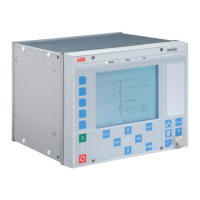Table 4. Binary input/output options
Binary input options BI BO
Default 14 9
With one optional binary I/O
module
23 18
With two optional binary I/O
modules
32 27
17. Communication
The IED supports the new IEC 61850
substation automation standard including
horizontal GOOSE communication as well as
the well-established DNP3 (TCP/IP) protocol.
All operational information and controls are
available through these protocols.
Disturbance files are accessed using the IEC
61850 protocol. Disturbance files are
available to any Ethernet based application in
the standard COMTRADE format. Further, the
IED sends and receives binary signals from
other IEDs using the IEC 61850-8-1 GOOSE
profile. The IED meets the GOOSE
performance requirements for tripping
applications in distribution substations, as
defined by the IEC 61850 standard. The IED
interoperates with other IEC 61850 compliant
IEDs, tools and systems and simultaneously
reports events to five different clients on the
IEC 61850 station bus. For a system using
DNP3 over TCP/IP, events can be sent to four
different masters.
All communication connectors, except for the
front port connector, are placed on integrated
communication modules. The IED is
connected to Ethernet-based communication
systems via the RJ-45 connector (10/100BASE-
TX) or the fibre-optic multimode LC
connector (100BASE-FX).
The IED supports SNTP, DNP3 and IRIG-B
time synchronization methods with a time-
stamping resolution of 1 ms.
Ethernet based:
• SNTP (Simple Network Time Protocol)
• DNP3
With special time synchronization wiring:
• IRIG-B (Inter-Range Instrumentation Group
- Time Code Format B)
Table 5. Supported communication interface and protocol alternatives
Interfaces/Protocols
1)
Ethernet
100BASE-TX RJ-45
Ethernet
100BASE-FX LC
IEC 61850
● ●
DNP3
● ●
● = Supported
1) Please refer to the Selection and ordering data chapter for more information
Transformer Protection and Control 1MRS756788 A
RET630
Product version: 1.0 Issued: 15.09.2009
14 ABB

